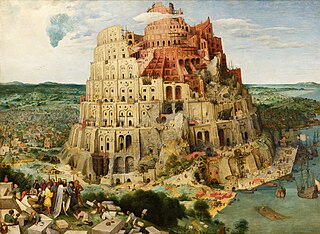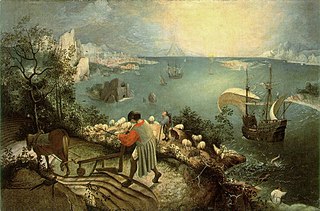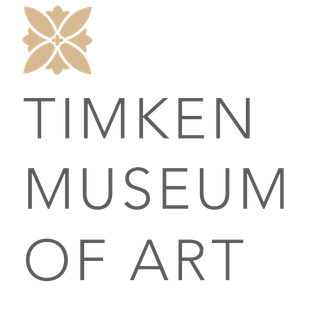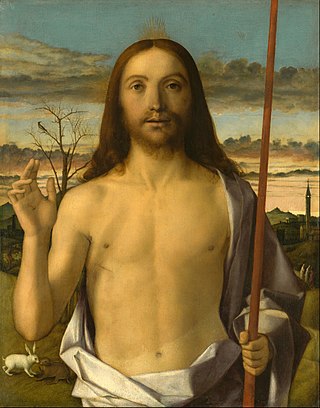
Pieter Brueghelthe Younger was a Flemish painter known for numerous copies after his father Pieter Bruegel the Elder's work, as well as original compositions and Bruegelian pastiches. The large output of his studio, which produced for the local and export market, contributed to the international spread of his father's imagery.

Pieter Bruegelthe Elder was among the most significant artists of Dutch and Flemish Renaissance painting, a painter and printmaker, known for his landscapes and peasant scenes ; he was a pioneer in presenting both types of subject as large paintings.

Jan Brueghelthe Elder was a Flemish painter and draughtsman. He was the younger son of the eminent Flemish Renaissance painter Pieter Bruegel the Elder. A close friend and frequent collaborator with Peter Paul Rubens, the two artists were the leading Flemish painters in the Flemish Baroque painting of the first three decades of the 17th century.

Pieter Aertsen, called Lange Piet because of his height, was a Dutch painter in the style of Northern Mannerism. He is credited with the invention of the monumental genre scene, which combines still life and genre painting and often also includes a biblical scene in the background. He was active in his native city Amsterdam but also worked for a long period in Antwerp, then the centre of artistic life in the Netherlands.

Landscape with the Fall of Icarus is a painting in oil on canvas measuring 73.5 by 112 centimetres now in the Oldmasters Museum in Brussels. It was long thought to be by the leading painter of Dutch and Flemish Renaissance painting, Pieter Bruegel the Elder. However, following technical examinations in 1996 of the painting hanging in the Brussels museum, that attribution is regarded as very doubtful, and the painting, perhaps painted in the 1560s, is now usually seen as a good early copy by an unknown artist of Bruegel's lost original, perhaps from about 1558. According to the museum: "It is doubtful the execution is by Bruegel the Elder, but the composition can be said with certainty to be his", although recent technical research has re-opened the question.

The Tower of Babel was the subject of three paintings by Dutch and Flemish Renaissance painter Pieter Bruegel the Elder. The first, a miniature painted on ivory, was painted in 1552–1553 while Bruegel was in Rome, and is now lost. The two surviving works are oil paintings on wood panels, sometimes distinguished by the prefix "Great" and "Little" and by their present location: Kunsthistorisches Museum Wien in Vienna and the latter in the Museum Boijmans Van Beuningen in Rotterdam. The Tower of Babel in Vienna is dated 1563, while the version is Rotterdam is undated but widely believed to have been painted sometime after.

Dutch and Flemish Renaissance painting represents the 16th-century response to Italian Renaissance art in the Low Countries, as well as many continuities with the preceding Early Netherlandish painting. The period spans from the Antwerp Mannerists and Hieronymus Bosch at the start of the 16th century to the late Northern Mannerists such as Hendrik Goltzius and Joachim Wtewael at the end. Artists drew on both the recent innovations of Italian painting and the local traditions of the Early Netherlandish artists.

Hans Bol or Jan Bol, was a Flemish painter, miniature painter, print artist and draftsman. He is known for his landscapes, allegorical and biblical scenes, and genre paintings executed in a late Northern Mannerist style.

Joos de Momper the Younger or Joost de Momper the Younger was a Flemish landscape painter active in Antwerp between the late 16th century and the early 17th century. Brueghel's influence is clearly evident in many of de Momper's paintings. His work is situated at the transition from late 16th-century Mannerism to the greater realism in landscape painting that developed in the early 17th century. He achieved considerable success during his lifetime.

The Timken Museum of Art is a fine art museum in Balboa Park in San Diego, California, close to the San Diego Museum of Art. It was established in 1965.

The Blind Leading the Blind, Blind, or The Parable of the Blind is a painting by the Netherlandish Renaissance artist Pieter Bruegel the Elder, completed in 1568. Executed in distemper on linen canvas, it measures 86 cm × 154 cm. It depicts the Biblical parable of the blind leading the blind from the Gospel of Matthew 15:14, and is in the collection of the Museo di Capodimonte in Naples, Italy.

Abel Grimmer was a Flemish late Renaissance painter, mainly of landscapes and, to a lesser extent, of architectural paintings. His works were important in the development towards more naturalism in Flemish landscape painting.

Peeter Baltens, Pieter Balten or Pieter Custodis, was a Flemish Renaissance painter, draughtsman, engraver and publisher. Baltens was also active as an art dealer and poet. He was known for his genre paintings, religious compositions and landscapes.

The Census at Bethlehem is an oil-on-panel painting by the Flemish Renaissance artist Pieter Bruegel the Elder, painted in 1566. It is signed and measures about 1155 × 1645 mm. It is now in the Oldmasters Museum in Brussels, which acquired it in 1902.

The world landscape, a translation of the German Weltlandschaft, is a type of composition in Western painting showing an imaginary panoramic landscape seen from an elevated viewpoint that includes mountains and lowlands, water, and buildings. The subject of each painting is usually a Biblical or historical narrative, but the figures comprising this narrative element are dwarfed by their surroundings.

Winter Landscape with Skaters is a c.1608 oil-on-oak painting by the Dutch artist Hendrick Avercamp in the collection of the Rijksmuseum in Amsterdam.

Several oil-on-oak-panel versions of The Massacre of the Innocents were painted by 16th-century Netherlandish painters Pieter Bruegel the Elder and his son Pieter Brueghel the Younger. The work translates the Biblical account of the Massacre of the Innocents into a winter scene in the Southern Netherlands in the prelude to the Dutch Revolt against Spanish rule, also known as the Eighty Years' War.

The Adoration of the Magi in the Snow is a painting in oils on oak panel of 1563, by Pieter Bruegel the Elder, now in the Oskar Reinhart Collection Am Römerholz in Winterthur, Switzerland. With two Italian exceptions, it is thought to be the first depiction of falling snow in a Western painting, the snowflakes boldly shown by dots of white across the whole scene, added when the work was otherwise completed.

Winter Landscape with a Bird Trap, also known as The Bird Trap, is a panel painting in oils by the Flemish painter Pieter Bruegel the Elder, from 1565, now in the Oldmasters Museum in Brussels. It shows a village scene where people skate on a frozen river, while on the right among trees and bushes, birds gather around a bird trap. It is signed and dated at the lower right: "BRVEGEL / M.D.LXV’1". There are more early copies of this than any other painting by Pieter Bruegel the Elder, many by his much younger son Pieter Brueghel the Younger, or other members of the Brueghel family dynasty and workshop. The art historian Klaus Ertz documented 127 copies in his comprehensive monograph on the artist's son in 2000.

Christ Blessing is a painting by Italian Renaissance master Giovanni Bellini created around the year 1500.





















